A snowmobile GPS mount keeps your device secure and accessible so you can focus on the ride without worrying about losing your way.
Snowmobiles take you to some of the most remote and stunning winter landscapes, but when it comes to navigating those wide-open spaces, a reliable GPS system is vital. All that you need is a mount as rugged as your snowmobile.
There are several types of snowmobile GPS mounts to consider, with Garmin and Arkon being two of the standout names. Each has their unique perks. Garmin’s reputation for quality and precision is unmatched, making its mounts a popular choice for serious snowmobile enthusiasts. On the other hand, Arkon GPS mounts are known for versatility, often fitting a wide range of devices, which can be handy if you’re swapping out gear or loaning your snowmobile.
RAM mount systems add another layer of reliability and adaptability. Designed to take on rougher terrains, they’re favored by those who don’t mind pushing their snowmobiles to the limits. With a RAM system, you’re getting material that’s built to last, even in the harshest weather conditions.
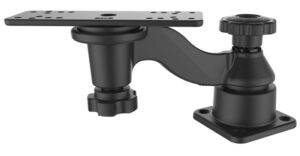
When choosing a mount, think about more than just brand. Durability is key. You want something that can take a bit of a beating in freezing temperatures and still work like a charm. Compatibility is another biggie – not all mounts fit all devices, so make sure what you pick works with your GPS unit. And let’s not forget about the installation process – some mounts are a breeze to set up, while others might need a bit more elbow grease.
A Closer Look at Popular GPS Mount Options
Choosing the right GPS mount is about knowing what fits your needs best. Garmin snowmobile GPS mounts are renowned for their precision engineering. They offer robust construction, providing security for your device, even when you’re blazing through snow. Users appreciate the seamless integration with Garmin GPS systems, ensuring a smooth interaction between mount and device.
Arkon GPS mounts offer flexibility that’s hard to match. These mounts are often adjustable, allowing you to position your GPS for optimal viewing angles. They’re compatible with multiple devices, which means if you switch between GPS brands, you aren’t stuck buying a new mount every time. This versatility can be a big advantage if you frequently upgrade or change devices.
For those who demand durability and strength, RAM snowmobile GPS mounts can’t be overlooked. Known for their rugged construction, these mounts feature a ball-and-socket design that can withstand significant vibration and impact. Whether you’re racing across frozen lakes or navigating dense forest trails, RAM mounts ensure your GPS remains steadfast and steady.
When it comes to price, Garmin tends to be on the higher end of the spectrum due to their specialized features and currently advanced technology integrations. Arkon provides a more budget-friendly option while still offering quality performance. RAM bridges the gap, providing a balance of strength and affordability.
Ultimately, value for money can differ based on your priorities. Garmin might be the way to go if precision and brand-specific integration are important. For versatility and adjusting capabilities, Arkon could be your best bet. If you need something that can withstand rough and rugged adventures, RAM may be your ideal choice.
Installing and Optimizing Your Snowmobile GPS Mount for Performance
Getting your GPS mount setup right is crucial for both safety and peace of mind. A properly installed mount ensures your device stays secure, easily accessible, and ready for whatever the terrain throws at you. Let’s break down the steps to make sure your GPS mount is locked and loaded for your next snow-filled adventure.
Installation can seem a bit daunting at first, especially with all the different mounts and device specs out there. Start by checking the included manual—yes, actually look at it! For mounts like those from RAM, the ball-and-socket joints need to click into place firmly. With Garmin, there might be a bit more emphasis on securing every nut and bolt because of their precision tuning.
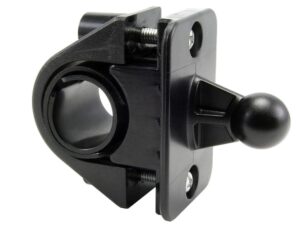
Common challenges include mounts not aligning perfectly with your snowmobile’s dashboard or clamps being too tight or too loose. If a mount isn’t sitting right, try loosening the screws a notch to allow for better adjustment. You want stability without stressing the device. In case you run into persistent issues, a quick browse through online forums or manufacturer support pages can offer handy fixes and insights from other users.
Now, onto the optimization. Once installed, make sure your GPS has a clear line of sight to the sky for the best signal reception—avoid metal obstructions that can throw off signal strength. Regularly check and clean the mounting area from snow and moisture to prevent corrosion and performance issues. A quick wipe with a soft cloth after each ride helps keep things in top shape.
Maintaining your GPS mount isn’t just about the hardware. Periodically update your GPS software for map accuracy and better connectivity. Most updates are straightforward via USB or over-the-air connections, depending on your model. This small step ensures you’re always navigating with the most recent data.
Ultimately, investing a bit of time in proper installation and regular maintenance of your GPS mount can make a world of difference in your snowmobiling experience. It guarantees that your focus stays on enjoying the ride, not fumbling with your navigation device.
As an Amazon Associate I earn from qualifying purchases.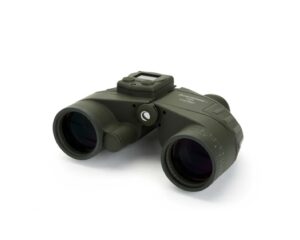
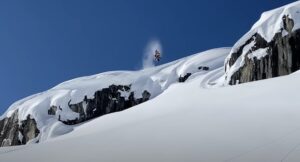

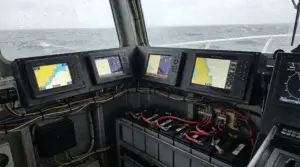


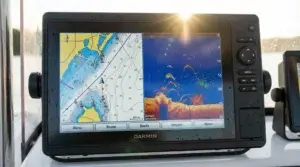
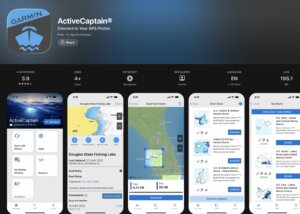

This article does a great job of outlining the importance of a solid snowmobile GPS mount and providing detailed insights into some of the top options like Garmin, Arkon, and RAM. It’s clear that choosing the right mount goes beyond just brand preference—it’s about durability, compatibility, and ease of installation. I’ve used a RAM mount for my snowmobile, and I can confirm that its ruggedness is a real asset when navigating through tough terrain. The advice on maintenance, such as keeping the mount clean and checking for updates, is something I’d recommend to anyone looking to get the most out of their GPS system. Overall, this article offers valuable tips for both new and experienced snowmobilers.
Thank you for sharing your thoughts! It’s great to hear firsthand feedback about the RAM mount—its ruggedness definitely seems like a key advantage for snowmobiling in challenging conditions. I completely agree that durability, compatibility, and ease of installation are crucial when selecting a GPS mount, especially for activities like snowmobiling, where the environment can be tough on equipment. Your point about regular maintenance is spot on as well; it’s often overlooked but makes a big difference in extending the life of the system. Thanks for adding your experience—your insights will surely help others make informed decisions!
Great breakdown of the different GPS mounts for snowmobiles! It’s so helpful to know the pros and cons of each option. I especially appreciate the detailed look at the durability of the RAM mounts sounds like they’re really built to handle the toughest conditions. As someone who spends a lot of time in rugged terrain, I can see why they’d be the go-to for anyone pushing their snowmobiles to the limit.
The versatility of the Arkon mounts is also a game-changer, especially if you frequently upgrade your devices. I like that it doesn’t lock you into one brand. And Garmin’s reputation for precision really stands out, though the price can be a bit of a factor if you’re on a budget.
Overall, it sounds like finding the right mount really depends on what kind of snowmobile rider you are. If you prioritize toughness and stability, RAM seems like the best bet. But if versatility or precision matters more, then Garmin or Arkon would be great options. Thanks for the helpful insights!
Thank you for the thoughtful feedback! I’m glad you found the breakdown helpful. You’re absolutely right—choosing the right GPS mount really does come down to what kind of rider you are and your priorities on the trail. RAM mounts definitely shine in rugged conditions, offering that unmatched durability for intense adventures. It sounds like they’d be a perfect fit for the kind of riding you do.
The versatility of Arkon mounts is such a strong point too, especially for riders who like to keep their gear up-to-date without feeling tied to one brand. And Garmin’s precision is hard to beat if navigation accuracy is a top priority, even if the price can give pause.
Thanks again for sharing your perspective—it’s great to hear how these options resonate with someone who spends a lot of time in demanding terrain!
Hi Andrejs,
I just read your article on snowmobile GPS mounts, and it sparked several questions I’d love to get your expert take on. Your breakdown of Garmin, Arkon, and RAM mounts was enlightening, but I’m particularly curious about some real-world scenarios.
You mentioned that RAM mounts excel in handling vibration and impact. In your experience, how do they perform specifically in sub-zero temperatures? I’ve heard mixed reviews about the ball-and-socket joints becoming less flexible in extreme cold, have you encountered this issue?
Also, I found your point about Garmin’s precision engineering intriguing. While they’re pricier, you seem to suggest they’re worth the investment. Could you elaborate on what specific features justify the higher price point compared to Arkon mounts? I’m especially interested in your thoughts on their cold-weather performance.
One aspect I’d love to hear more about is your personal experience with moisture resistance. Given that snow can melt and refreeze around these mounts, which brand have you found most reliable in preventing corrosion over multiple seasons?
Your maintenance section was practical, but I’m wondering if you’ve discovered any unconventional tricks for keeping these mounts in top condition during long expeditions? Any DIY solutions that have worked particularly well?
Looking forward to hearing your insights on these points. Your article has helped narrow down my choices, but your real-world experience would be invaluable in making a final decision.
Best regards,
Eric
Here’s a detailed response you could use:
Hi Eric,
Thank you for taking the time to read my article and for your thoughtful questions! I’m glad you found the breakdown of Garmin, Arkon, and RAM mounts helpful. Let me dive into your questions and share some insights based on my experiences with these mounts in real-world scenarios.
1. RAM Mounts and Sub-Zero Temperatures
You’re absolutely right that extreme cold can sometimes affect the flexibility of ball-and-socket joints. In my experience, RAM mounts hold up well in sub-zero conditions due to the high-quality rubber used in their construction. However, when temperatures drop below -20°C (-4°F), I’ve noticed a slight stiffening in the joint movement, which can make adjustments more challenging. That said, this doesn’t usually impact their ability to hold a device securely. One workaround I’ve found is to pre-adjust the mount to the desired position before heading out into extremely cold conditions, minimizing the need for adjustments on the trail.
2. Garmin’s Precision Engineering and Higher Price Point
Garmin’s mounts come with a premium price tag, and I believe this is justified for several reasons. First, their materials and build quality are exceptional—Garmin uses high-grade plastics and metals that resist cracking and deformation even in extreme cold. Second, their mounts often integrate seamlessly with their devices, ensuring a secure fit that reduces the risk of dislodging during high-impact rides. Additionally, Garmin mounts often include features like anti-vibration dampers and enhanced stability mechanisms, which significantly improve performance in rugged conditions. In terms of cold-weather performance, Garmin’s mounts are among the most reliable I’ve used—they remain flexible and easy to adjust, even in temperatures well below freezing.
3. Moisture Resistance and Corrosion
This is a critical factor for snowmobile GPS mounts, and it’s one where I’ve seen differences between brands. RAM mounts, with their powder-coated aluminum components, are highly resistant to corrosion, even after repeated exposure to melting and refreezing snow. Garmin mounts are also excellent in this regard, thanks to their use of rust-resistant materials and tight design tolerances that minimize moisture ingress. Arkon mounts, while generally durable, may require a bit more care in wet environments as their components can show wear over time if not properly maintained. Over multiple seasons, I’ve found RAM mounts to be the most reliable in preventing corrosion, especially when paired with occasional maintenance (more on that below).
4. Maintenance and DIY Tips
For long expeditions, routine maintenance is key to ensuring your mounts stay in top condition. Here are a few unconventional tricks I’ve picked up:
Apply a light silicone spray: This helps repel moisture and prevents joints from freezing up in extreme cold.
Use dielectric grease: Apply a small amount to metal components to prevent corrosion and rust.
DIY vibration dampers: For particularly rough trails, I’ve had success cutting small pieces of neoprene or rubber and placing them between the mount and the sled’s surface. This reduces vibration and adds an extra layer of insulation against moisture.
Protect with a cover: When parked, a small cover over the mount can help prevent snow buildup that later refreezes around joints or clamps.
I hope this answers your questions and provides you with some additional context to make an informed decision. If you’re leaning toward a specific mount or have any further questions, feel free to reach out—I’d be happy to help!
Best regards,
Andrejs
Wow, what a useful device. When out in the snow it is so easy to lose your sense of direction. I know as it has happened to me in the past. Especially on unfamiliar grounds. This device is great as it is hard wearing and attaches firmly onto your snowmobile so it will withstand all the bumping around and it will definitely help to find your way home again.
Thank you for sharing your experience! Getting turned around in unfamiliar snowy terrain can definitely be unnerving, and having a reliable device like this makes all the difference. Its rugged build and secure attachment to the snowmobile are definitely highlights—it’s reassuring to know it can handle tough conditions without fail. Plus, having a dependable way to navigate back home, especially in low-visibility weather, brings so much peace of mind. Have you found any other features particularly helpful, like integrated maps or real-time location tracking?
Interesting. I never even thought about GPS for a snowmobile. It would be a great way to keep safe and prevent getting lost. There isn’t much opportunity for snowmobiles here in Florida. However, when I lived in Oregon, Colorado, and Utah we had plenty of opportunities. Your article is very well written and informative. I especially like how you strategically placed your links in this article. Best of luck at WA!
Thank you so much for the kind words! You’re absolutely right—GPS on a snowmobile can be a real lifesaver, especially in unfamiliar areas or harsh conditions. It’s amazing how much safer and more enjoyable it can make the experience.
I can see how Florida might not offer much opportunity for snowmobiling, but it sounds like you’ve had some fantastic experiences in Oregon, Colorado, and Utah! Those are some incredible places for snowmobiling. I really appreciate your feedback on the article, and I’m glad you found it helpful. Best of luck to you as well!
I have been snowmobiling almost all my life and always thought “gee, wouldn’t it be nice to know where I’m at and what route to take instead of guessing?”. Never thought to get a GPS mount for my sled!
I like how you break down the different types and make it simple to understand the differences between the brands. I think RAM might be my best option given our severe winters we have and rugged terrains.
Have you tried any of these mounts yourself?
Thanks for the kind words! I completely get where you’re coming from—having a GPS mount on my sled and ATV has been a game-changer for navigating trails and rugged terrain. Like you, I spent years snowmobiling and wishing I had a better way to track my location and routes.
I’ve tried a few different mounts, including RAM, and they’ve held up well, even in severe winter conditions. Their durability and versatility really stand out, especially when you’re tackling tough terrains. If you decide to go with RAM, I think you’ll be impressed!
This article really nails the importance of choosing the right GPS mount for snowmobiling! I’ve had some experience with both Garmin and RAM mounts, and they’ve definitely held up well in tough conditions. One thing I’m curious about though—how often do people find that mounts don’t fit their devices, especially if they switch GPS units? Also, do you have any tips for keeping the mount clear of snow buildup during longer rides? That’s always a bit of a hassle for me!
Thanks for your comment! It’s great to hear that Garmin and RAM mounts have worked well for you in tough conditions. Fit issues can definitely come up, especially when switching GPS units—some mounts are more universal, while others are model-specific, so it’s always good to double-check compatibility before buying. As for snow buildup, a good tip is to position the mount in a slightly more sheltered spot on your sled if possible, and applying a water-repellent spray can help keep snow from sticking. Some riders also use small DIY shields or covers to reduce accumulation. Hope that helps, and thanks for reading! ❄️🏔️